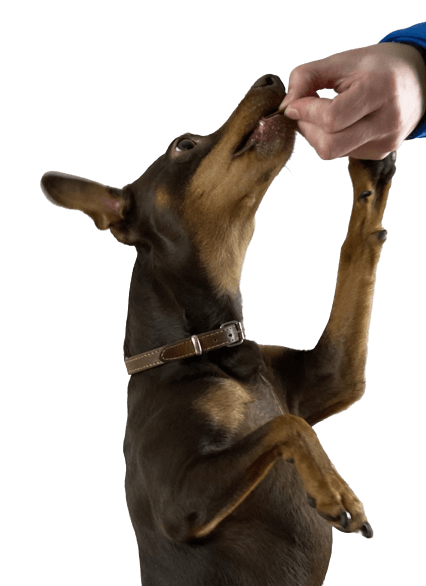Author: Evie Van Hove
My dog pulls on the lead
It is a common problem among dog owners: you are out for a pleasant walk, but your dog is constantly pulling on the lead. This behaviour can be frustrating and make walks less enjoyable. In this blog, we take a closer look at the causes of this behaviour and what you can do about it to correct it.
My dog pulls on the lead: causes
Dogs pull on the lead for different reasons. One of the most common reasons is that they are simply enthusiastic and want to go faster than their owners. Other possible causes include:
- Lack of training: The dog has never learned how to walk neatly on a leash.
- Natural instincts: Dogs naturally tend to sniff and explore their surroundings.
- Insufficient exercise: Dogs that do not get enough exercise have more energy and therefore pull harder on the lead.
- Environmental stimuli: Other dogs, animals or interesting smells can make your dog want to run faster.
"One of the most common reasons is that they are simply enthusiastic and want to go faster than their owners."
My dog pulls on the lead: solutions
Patience and consistency
The key to success in unleashing leash pulling is patience and consistency. Here are some modern and humane techniques you can try:
- Stop and Stand Still: Every time your dog pulls, stop walking and stand still. Only when the leash is slack again, start walking again. This teaches your dog that pulling doesn't pay off.
- Reverse: When your dog pulls, you suddenly change direction. This surprises your dog and teaches him to pay more attention to you.
- Reward good behaviour: Reward your dog every time he walks nicely next to you. This can be done with treats, toys or verbal compliments.
Ergonomic harness
Modern techniques emphasise the use of an ergonomic harness, such as Perfect Fit's harness. This type of harness distributes pressure evenly over the dog's body and prevents damage to the neck. It is comfortable for the dog and helps to reduce pulling. Many dog owners reported after purchasing an ergonomic harness that problems with leash pulling had already reduced or even disappeared completely.
Help from a behaviourist
If you are still experiencing problems despite your best efforts, it is advisable to seek the help of an experienced behaviourist. A professional can give you specific tips and techniques tailored to your dog and situation. They can also help address any underlying behavioural issues.
Avoid Outdated Techniques
It is important to avoid outdated techniques such as slip lines and prong collars. These methods are not only ineffective, but can also be harmful to your dog. They often cause pain and anxiety, which can lead to more behavioural problems in the long run. Moreover, they have never proven effective in permanently stopping pulling on the lead. This is because dogs do not make the link between the discomfort or pain on their neck, and their own behaviour.
Conclusion
Pulling on the lead is a common problem, but with patience, consistency and the right techniques, it is certainly possible to teach your dog to walk neatly on the lead. Use modern tools such as an ergonomic harness from Perfect Fit and consider getting help from a behaviourist if you get stuck. Avoid dangerous and outdated methods and focus on a humane approach that strengthens the bond between you and your dog.
With this approach, your walks with your dog will be a lot more enjoyable, both for you and your faithful four-legged friend.
Evie Van Hove is PgD Clinical Animal Behaviour, certified puppy coach, dog trainer and behaviour coach. She has been business manager of Pettherapy.be since 2021.





